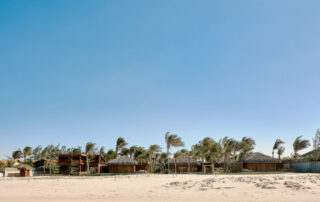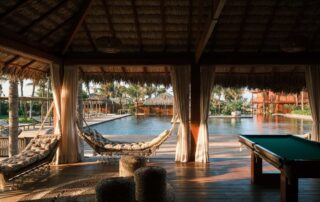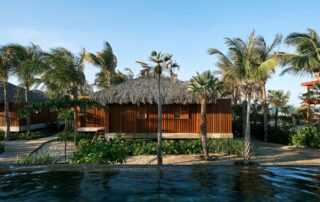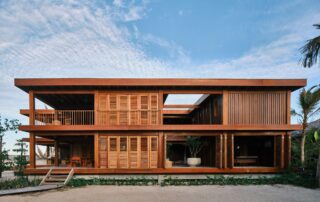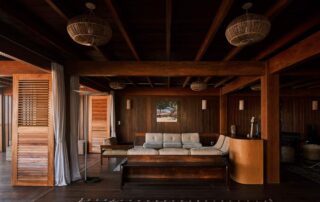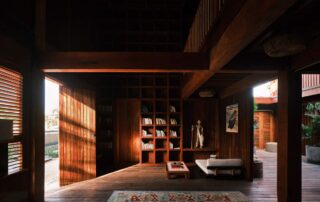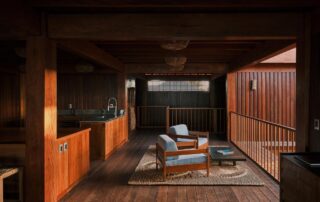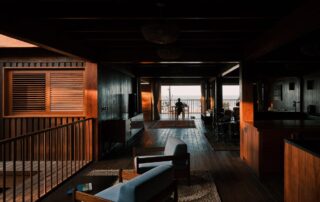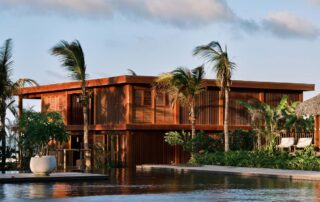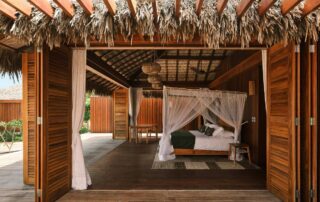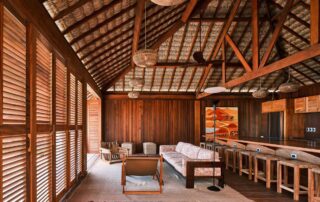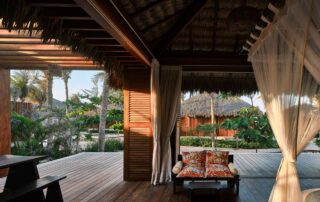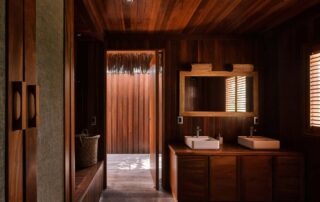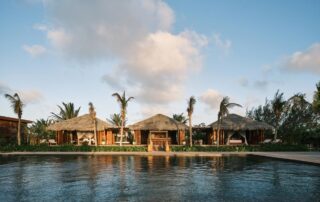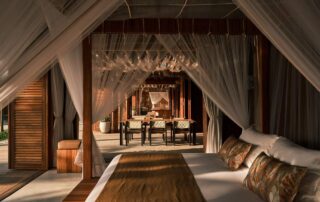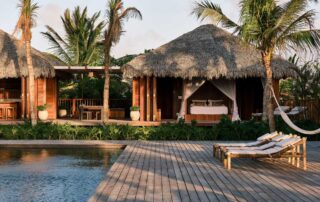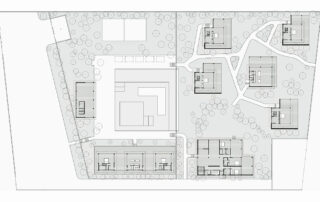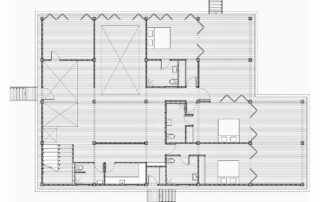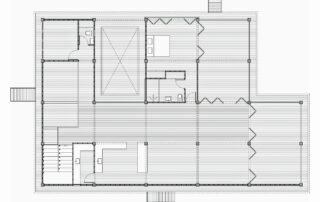The London-based collaboration between Elisa Commanay & Romain Conti-Granteral spearheaded the design and construction of the seaside resort Casas Elilula. Nestled on a 1-hectare plot between the Jericoacoara Sand Dunes and the Atlantic Ocean in Praia do Prea, on Brazil’s Northern coastline, the site boasts breathtaking ocean views. The region’s unique weather patterns, known for strong winds, make it a perfect location for kitesurfing.
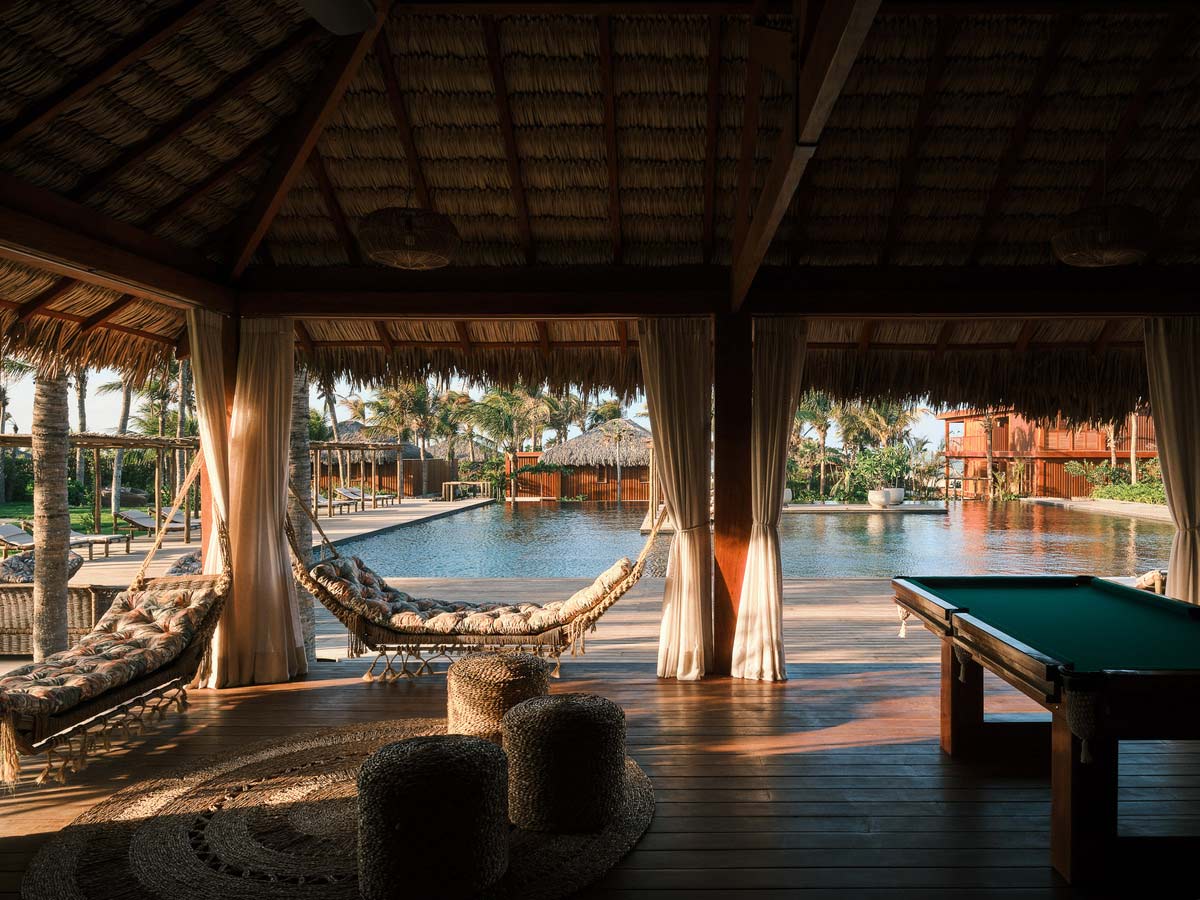
Photo: Pedro Kok.
The project strategically harnessed these intense natural elements throughout construction, aiming to eliminate the need for air conditioning and embrace sustainable design. The architecture reflects a commitment to local design strategies, blending traditional methods with contemporary principles. Elilula becomes a unique blend of passive ventilation strategies, renewable energies, and intentional spatial openness, creating an oasis-like ambiance within a lush tropical garden.
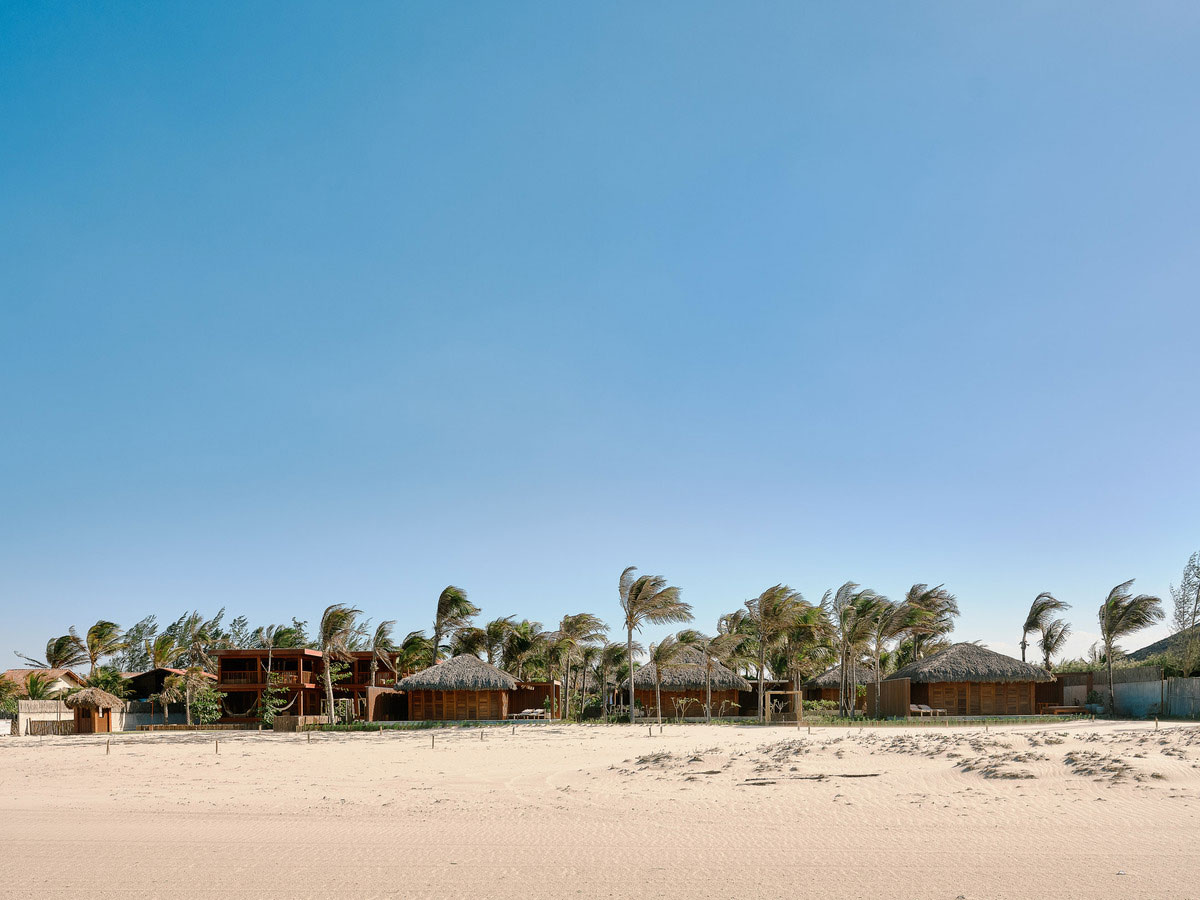
Photo: Pedro Kok.
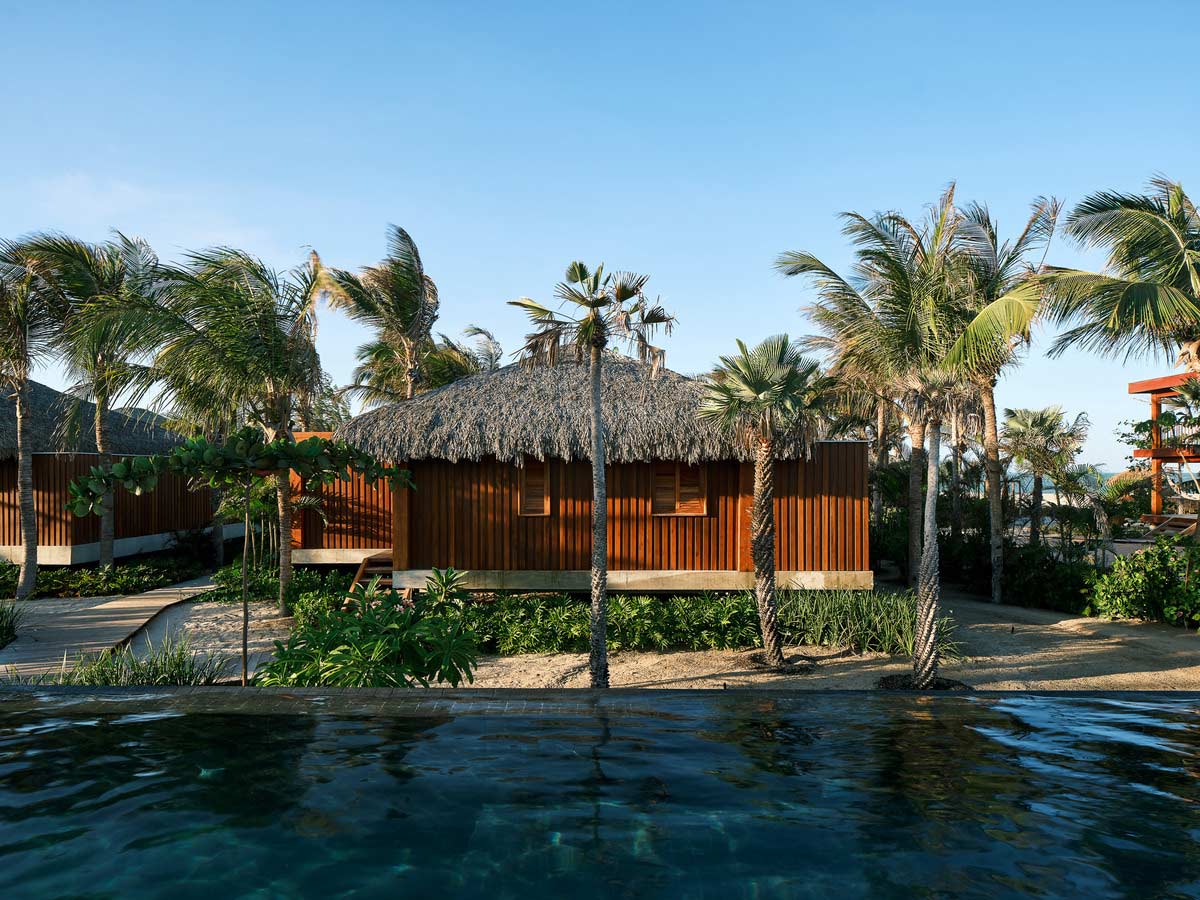
The project is structured into three unique properties: the beach suites known as ‘Casa La’, the garden suites known as ‘Casa Lu’, and the private villa with ocean views known as ‘Casa Eli’. These properties are arranged around a central communal pool and garden area, featuring a shared pool house building. The landscape and garden design, overseen by Sao Paulo-based Studio DeBarro, enhance the natural beauty of the surroundings and provide breathtaking views of the ocean.
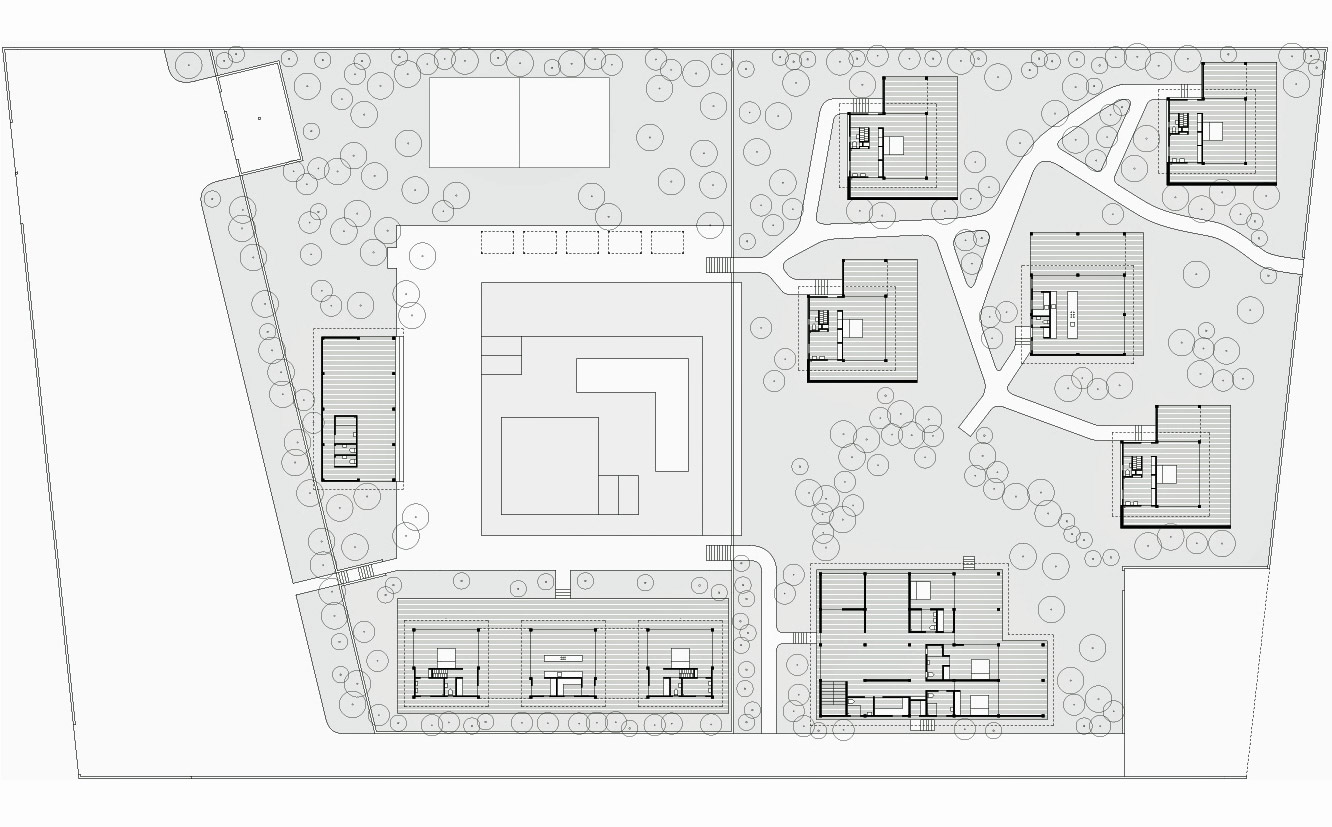
Site plan.
Casa La & Casa Lu
Casa La is a fragmented house composed of 5 bungalows strategically nestled amidst verdant gardens accessed by a raised wooden footpath, offering captivating ocean views. Its design prioritises an ocean-centric layout, facilitating smooth circulation and harmonious integration with nature. Each beach bungalow boasts bedrooms opening onto terraces with shaded pergolas, while essential services remain discreetly tucked away.
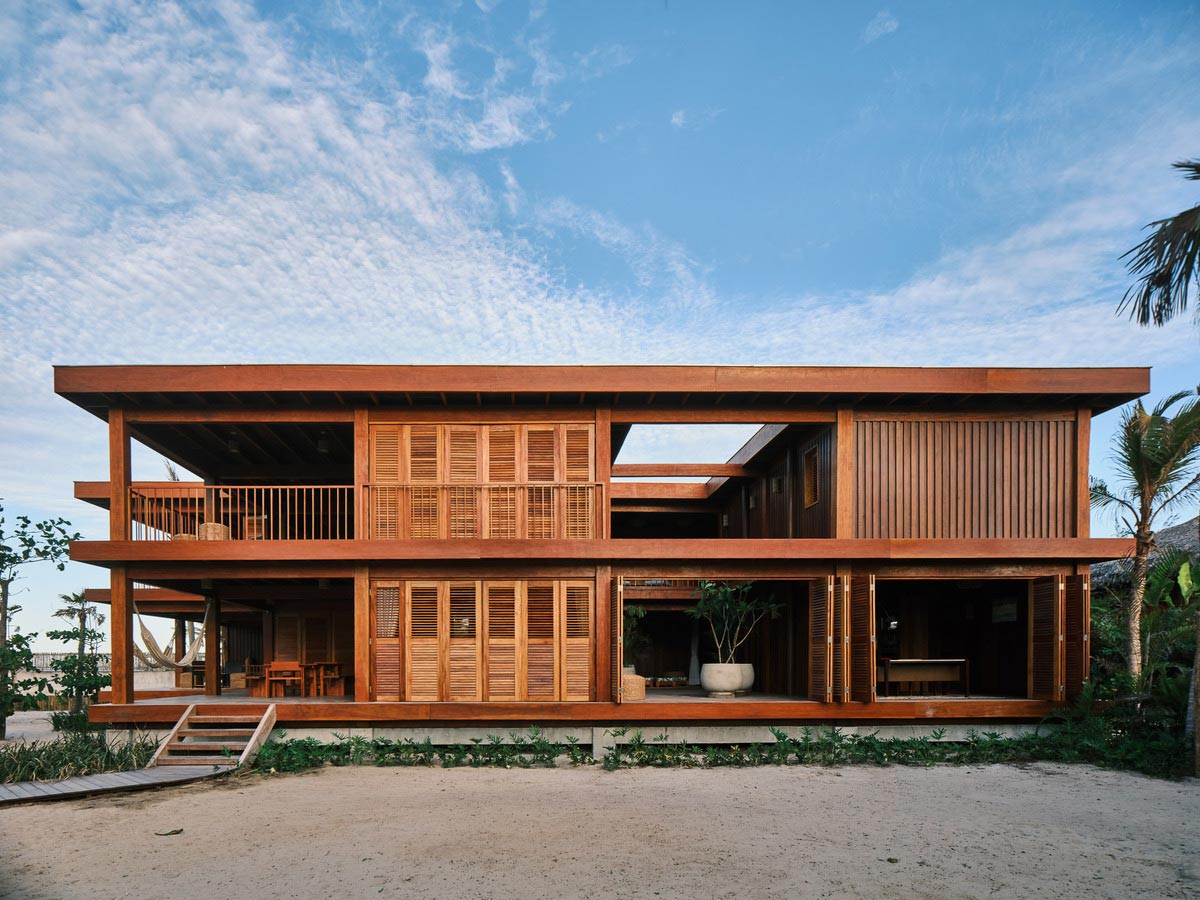
Beach House. Photo: Pedro Kok.
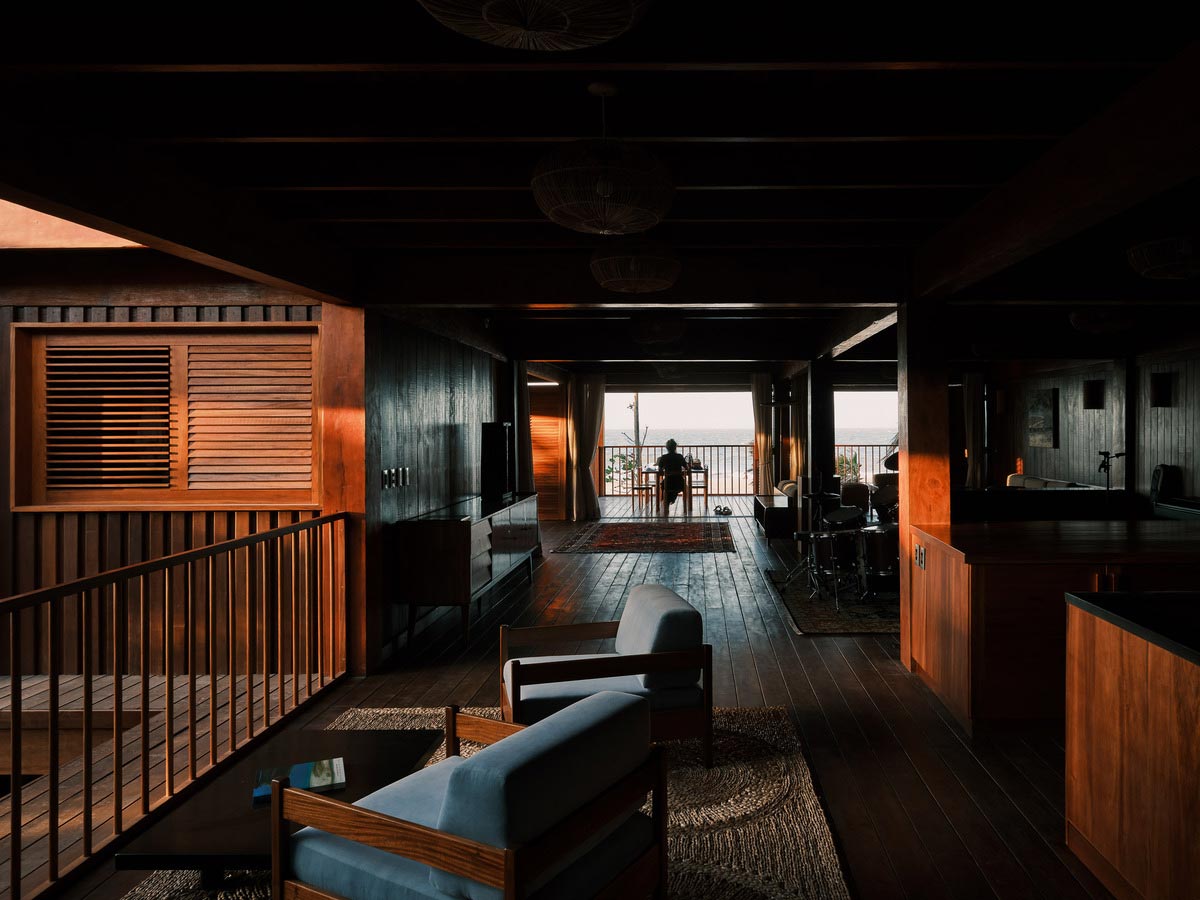
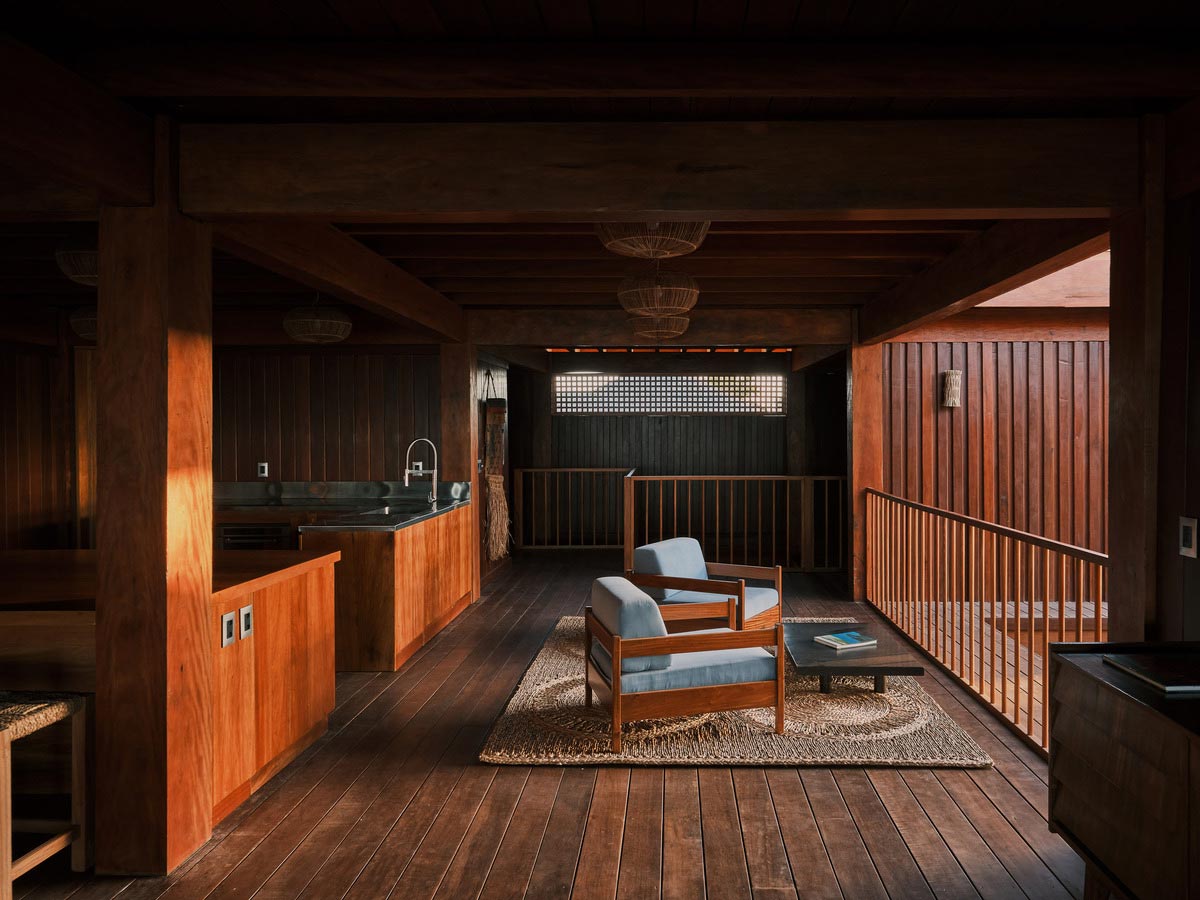
Meanwhile, Casa Lu is envisioned as a series of three interconnected spaces, surrounded by a spacious terrace with large pergola coverings, overlooking the lush garden. Emphasising communal living, the pool bungalows seamlessly extend into the outdoor environment. The design emphasizes intimacy, offering flexibility to adjust spaces based on residents’ preferences.

Beach House. Photo: Pedro Kok.
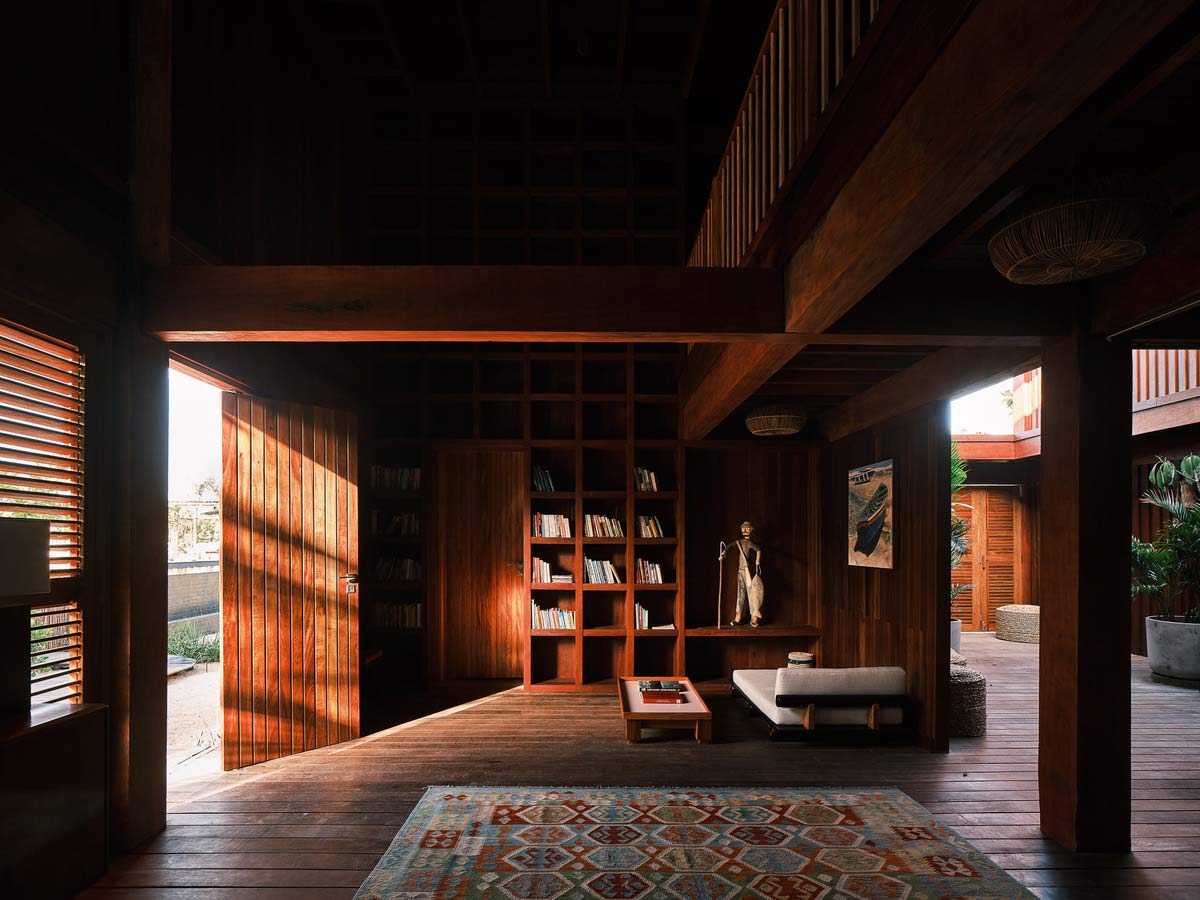
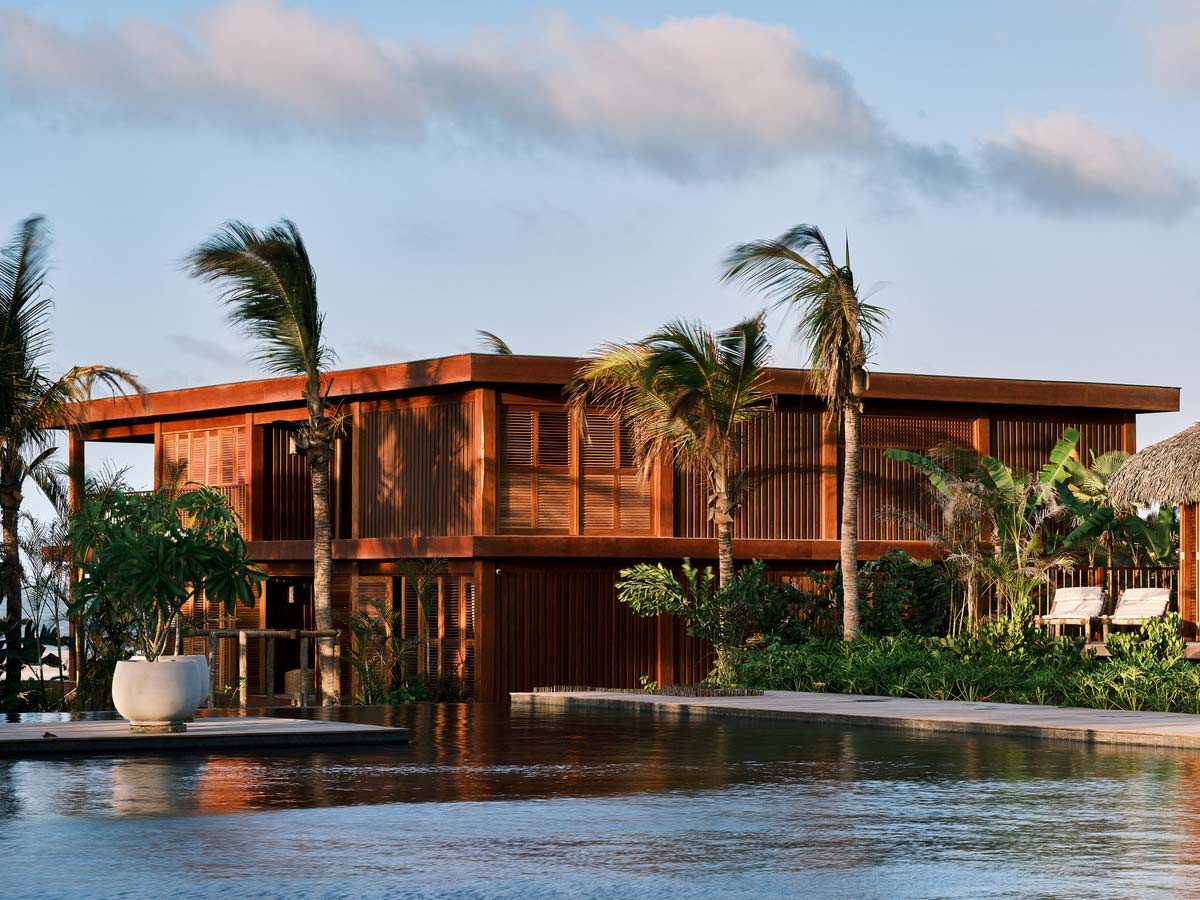
Both Casa La and Casa Lu feature foundations rooted in local construction methods, comprising concrete slabs, timber structures, and traditional ‘palha’ thatching. These elements are integrated with concrete slabs serving various functions like rainwater collection and thermal mass utilisation. An east-facing blind facade shields against winds, complemented by lush gardens. Crafted to seamlessly merge with the garden, the bungalows boast sliding doors and venezianas, enhancing the connection with nature. This innovative design harnesses prevailing winds, eliminating the need for air conditioning. External showers and shaded terraces further enhance the allure, with essential services discreetly positioned.
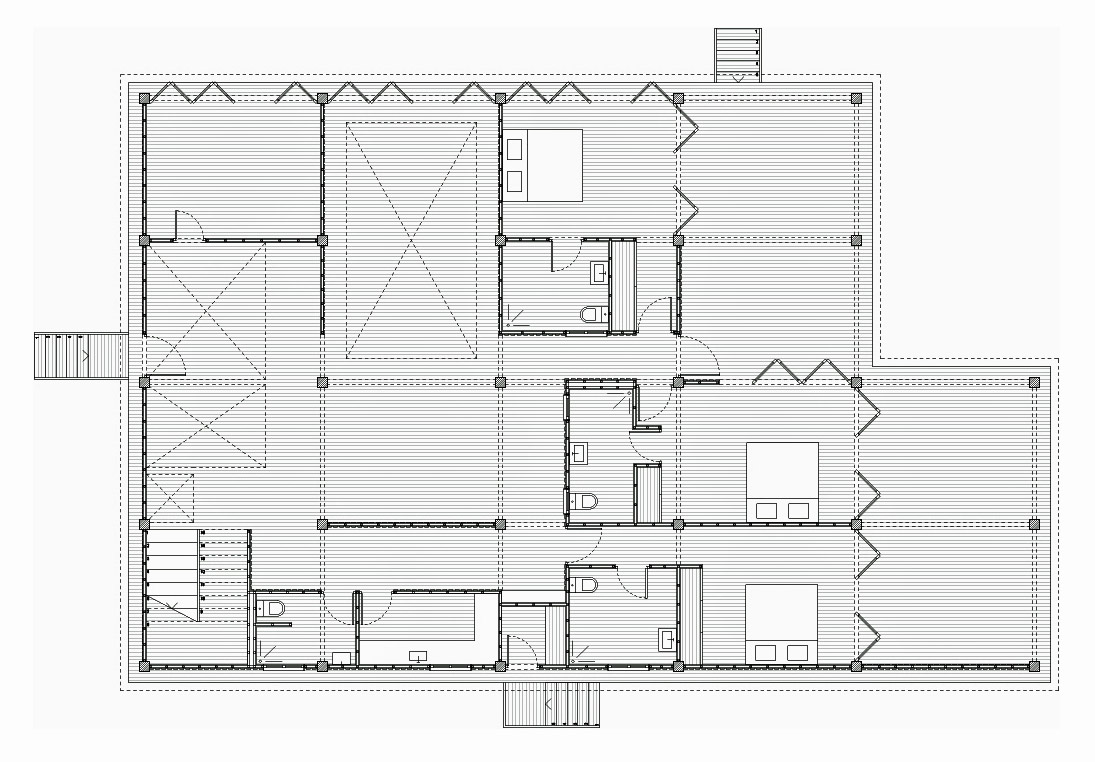
Beach house, ground floor plan.
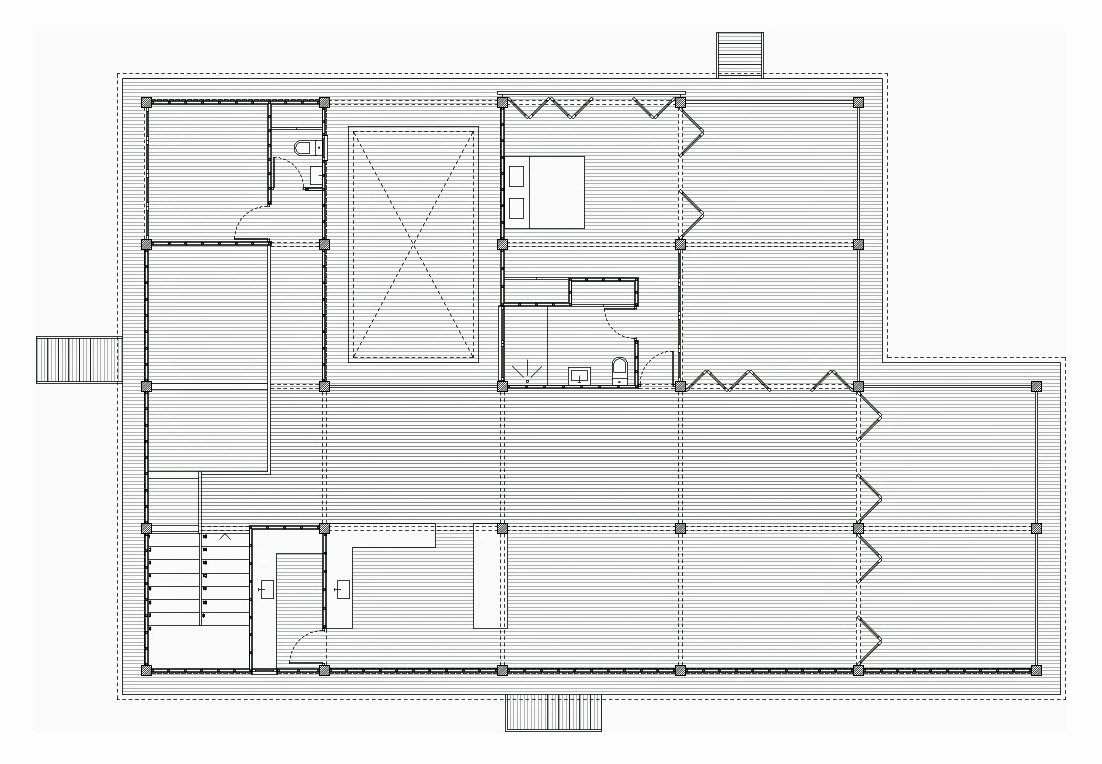
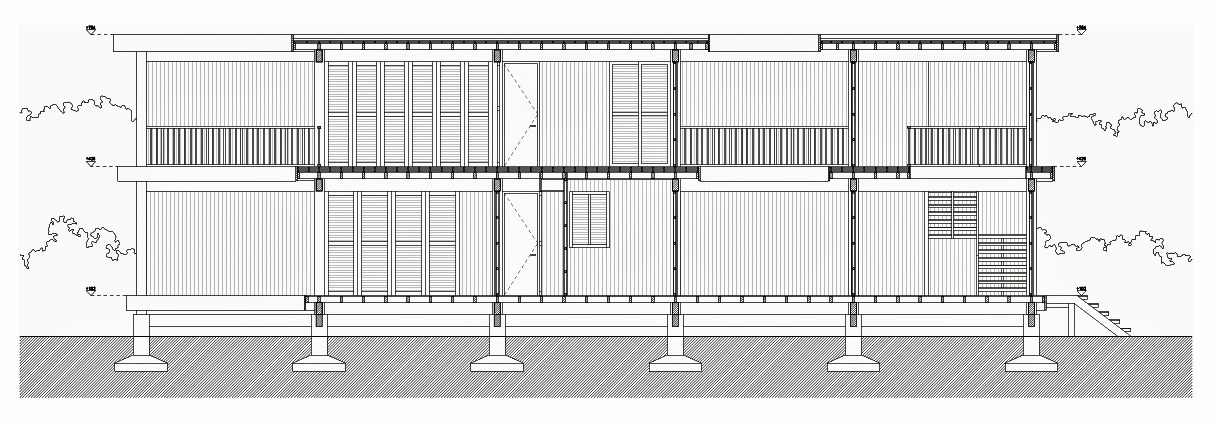
Casa Eli
The 600-square-meter beach villa, Casa Eli, is elevated from the sand, offering stunning views of the lush garden and the Atlantic Ocean. It features a mass timber megastructure constructed with locally sourced materials. The rigidity of the grid is softened by double-height spaces, a planted patio, and several shaded terraces, facilitating cross ventilation and seamless indoor-outdoor living experiences, mirroring the design approach seen in the guesthouses where rooms open completely onto the outside.

Beach bungalow. Photo: Pedro Kok.
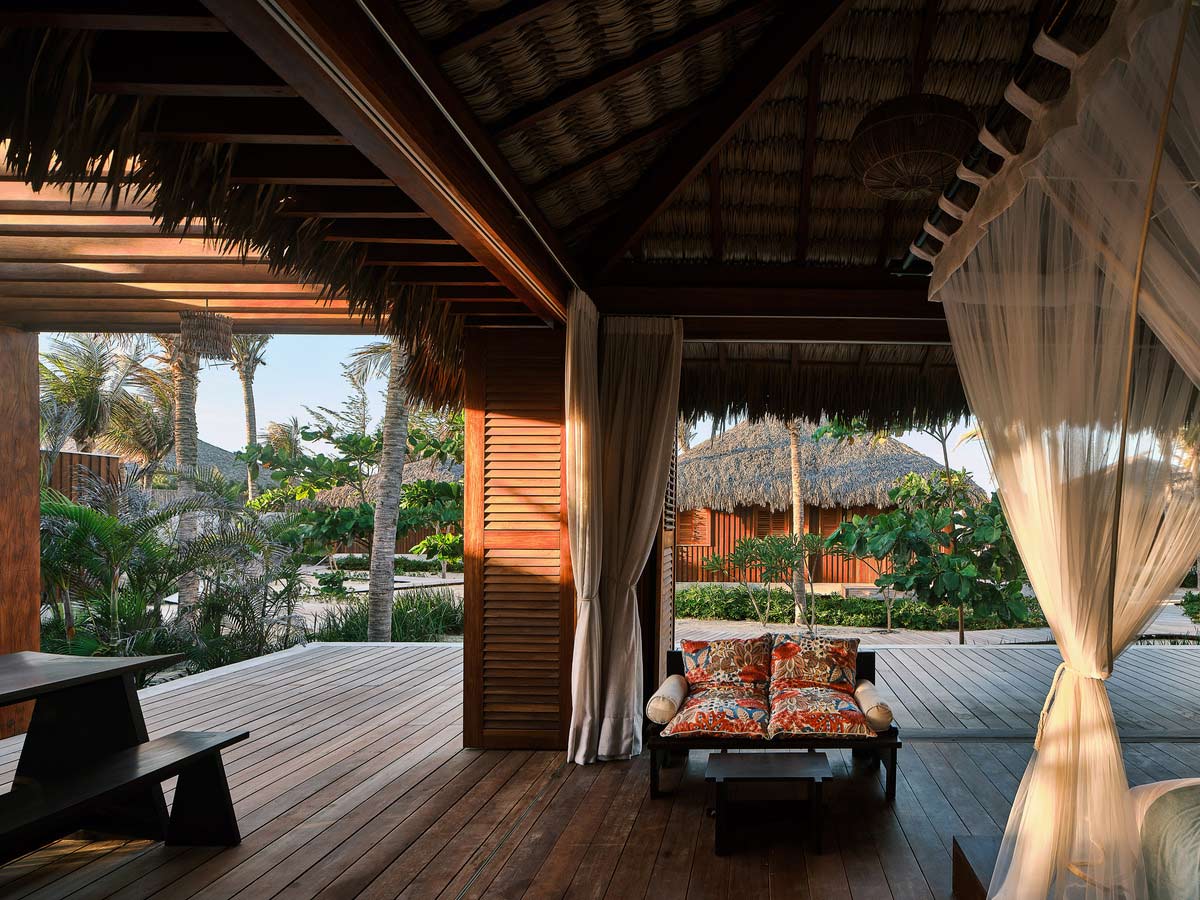
The wooden grid-like structure on both levels defines the overall volume and rhythm of the spaces, providing a cohesive architectural element throughout Casa Eli. Designed for a family of five on holiday, the building prioritises night spaces on the ground floor for thermal efficiency, while living areas are situated above to capitalise on the breathtaking views. Additionally, the villa includes a library, study room, music studio, and other amenities. Sustainable energy needs are met by a solar farm discreetly located at the rear of the site, aligning with the retreat’s commitment to renewable energies.
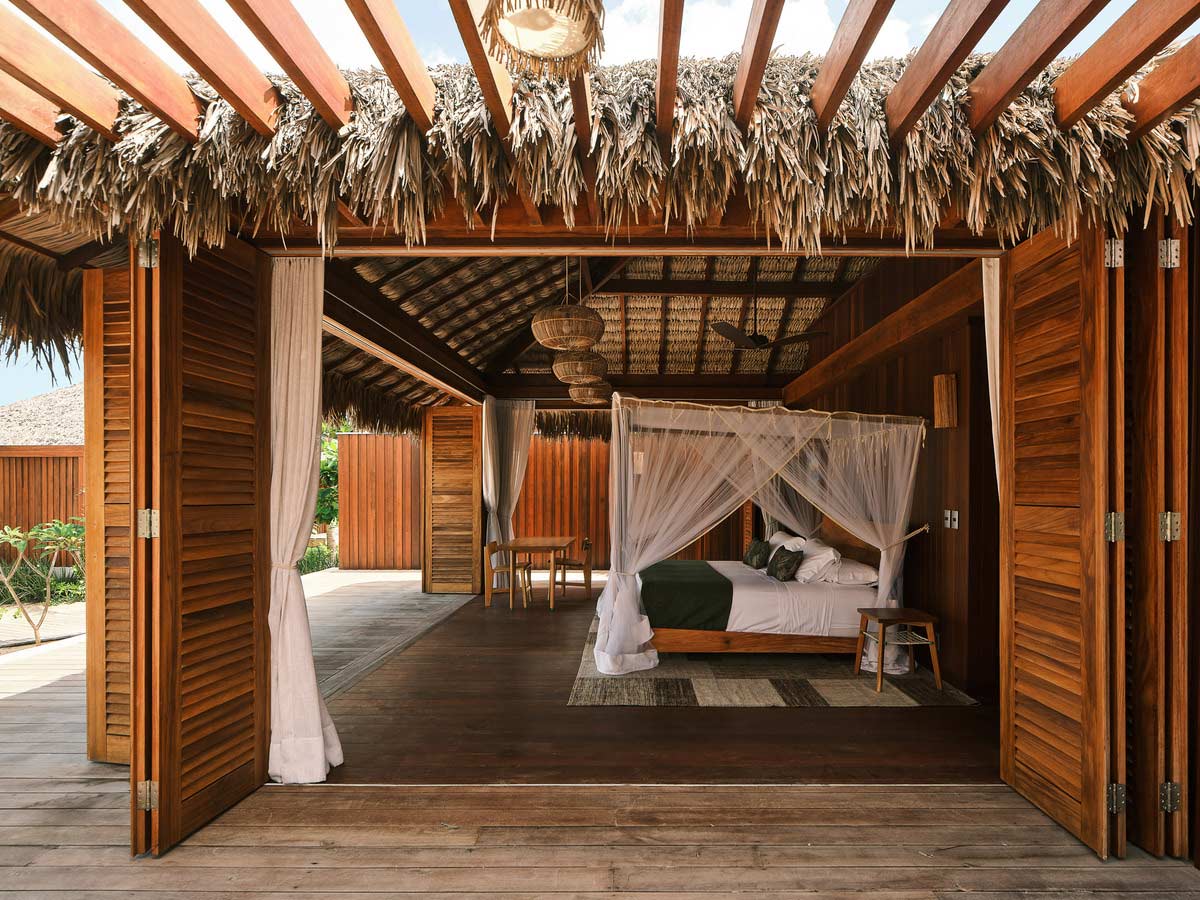
Beach bungalow. Photo: Pedro Kok.
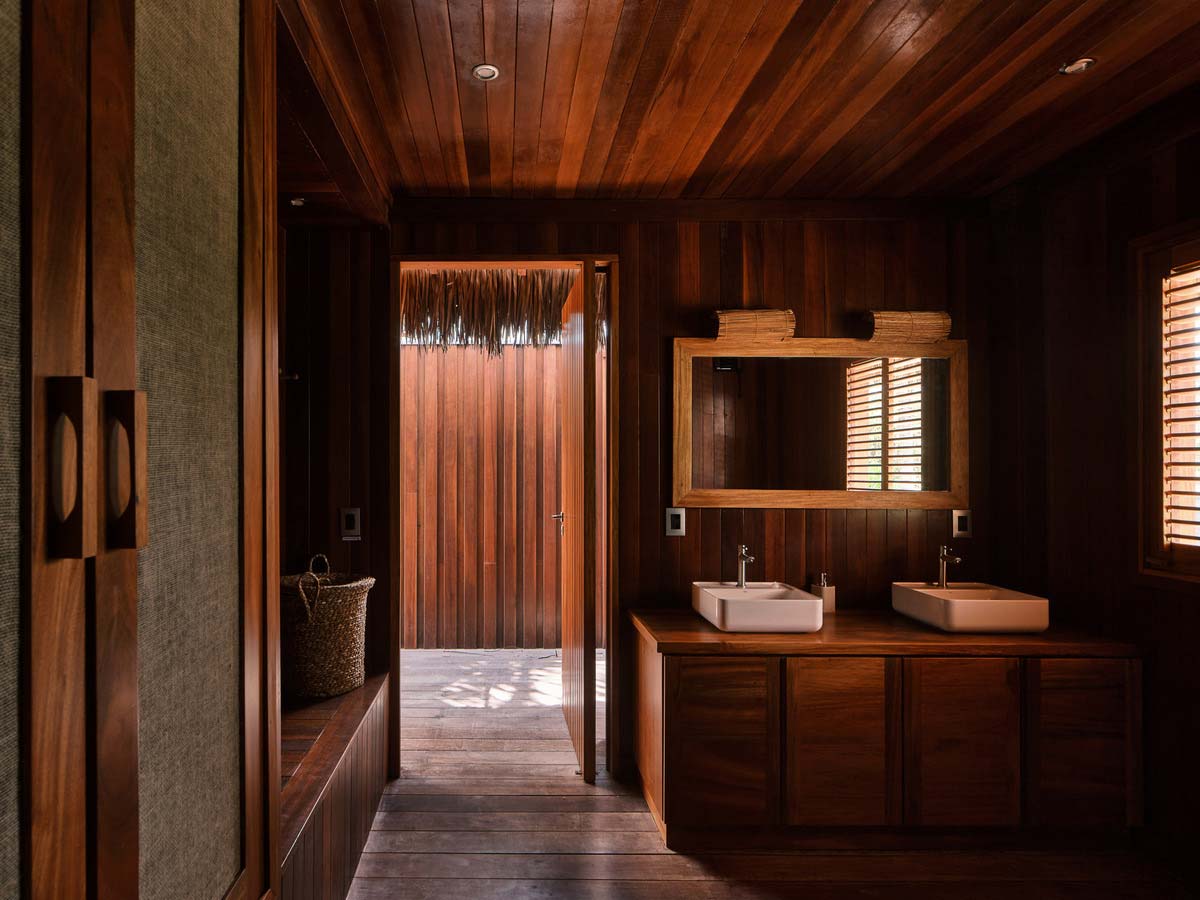
Elilula Collective
Beyond being a peaceful escape, Elilula is home to the Elilula Collective, a platform for exchange where artists gather to share ideas through workshops, residencies, and public events. In its inaugural year, the Elilula Collective welcomed both a collaboration with online gallery Display Fever led by Naz Balkaya to curate artwork found throughout the property, and UK-based painter and designer Quentin Martin for a one-week residency. Additionally, a six-month furniture residency brought together a diverse group of international UK-based designers who created site-specific furniture. Each piece now inhabits the various bungalows, making them distinct from one another and offering a unique interpretation of the surroundings and architecture of Elilula.
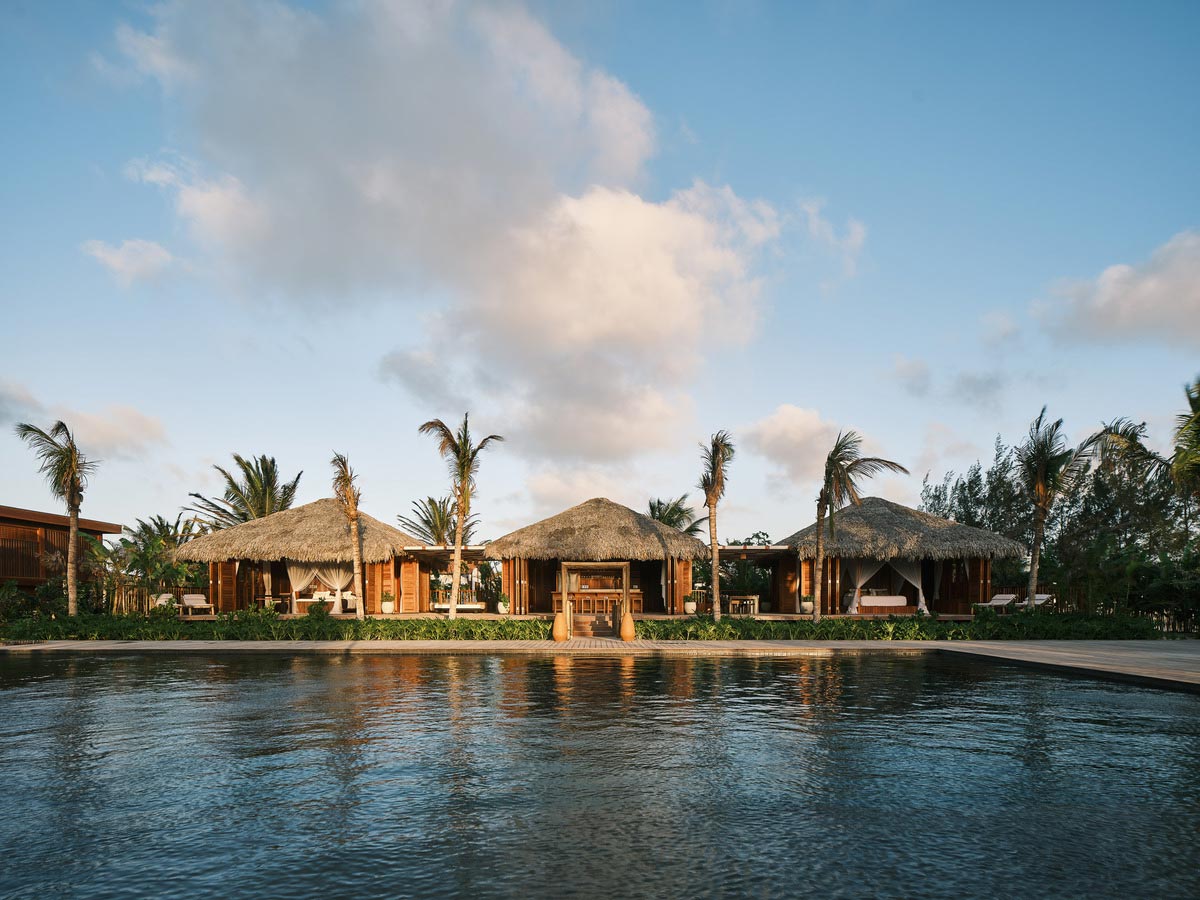
Pool bungalow. Photo: Pedro Kok.
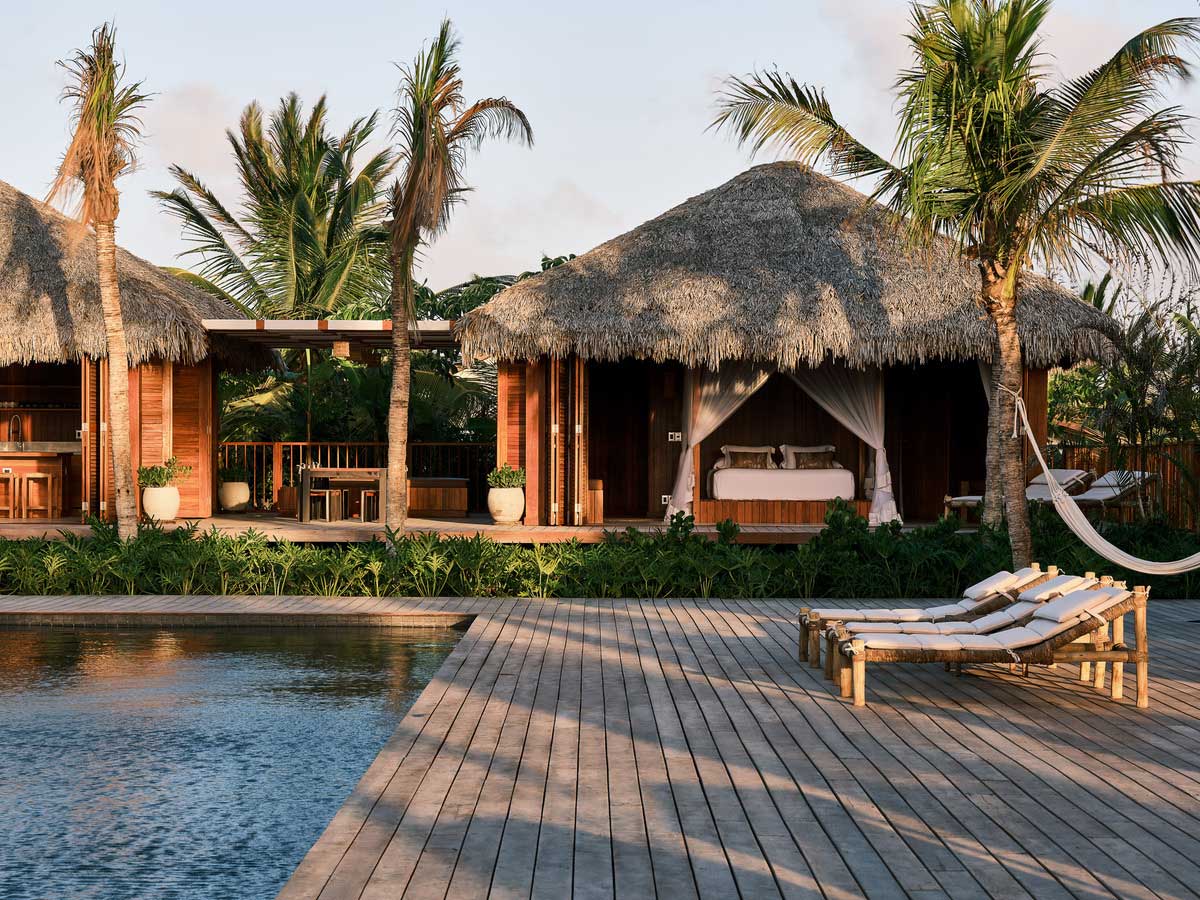
Detailed information about each designer and their contributions to Elilula can be found on the Casas Elilula website providing a rich tapestry of stories and inspirations behind the diverse and thoughtfully crafted furniture pieces that complement the overall architecture. The design, construction, and overall curation of both Elilula & Elilula Collective by Commanay and Conti-Granteral reflect a commitment to creating not just a physical retreat but a dynamic hub for creative exchange.
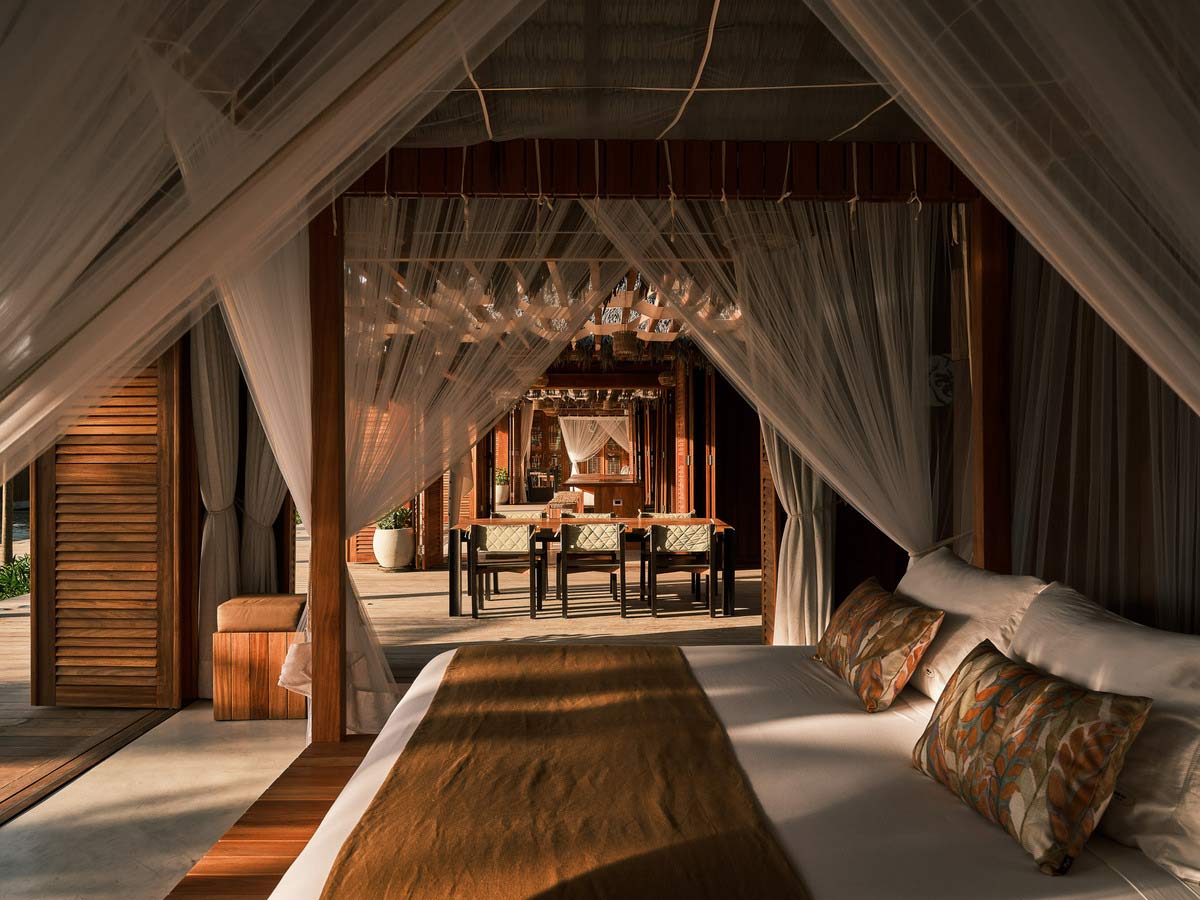
Pool bungalow. Photo: Pedro Kok.

